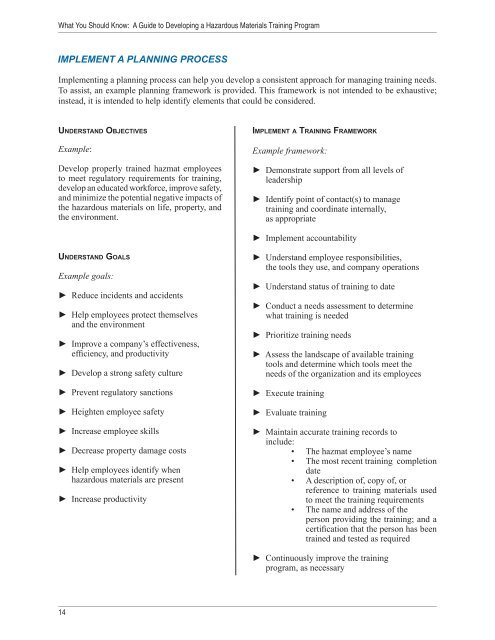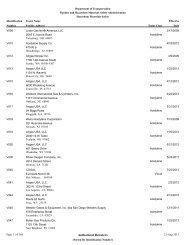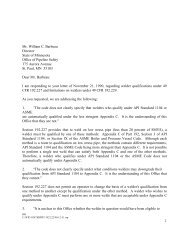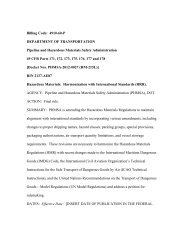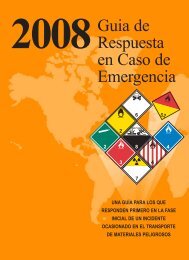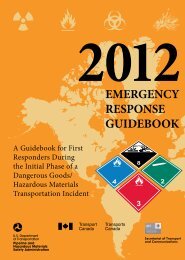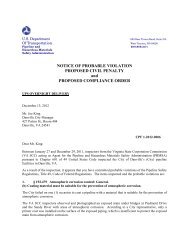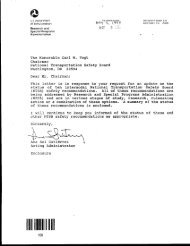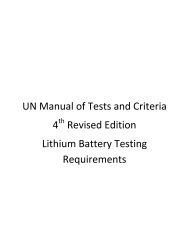Training Guidance7609am.indd - PHMSA - U.S. Department of ...
Training Guidance7609am.indd - PHMSA - U.S. Department of ...
Training Guidance7609am.indd - PHMSA - U.S. Department of ...
Create successful ePaper yourself
Turn your PDF publications into a flip-book with our unique Google optimized e-Paper software.
What You Should Know: A Guide to Developing a Hazardous Materials <strong>Training</strong> Program<br />
IMPLEMENT A PLANNING PROCESS<br />
Implementing a planning process can help you develop a consistent approach for managing training needs.<br />
To assist, an example planning framework is provided. This framework is not intended to be exhaustive;<br />
instead, it is intended to help identify elements that could be considered.<br />
UNDERSTAND OBJECTIVES<br />
Example:<br />
Develop properly trained hazmat employees<br />
to meet regulatory requirements for training,<br />
develop an educated workforce, improve safety,<br />
and minimize the potential negative impacts <strong>of</strong><br />
the hazardous materials on life, property, and<br />
the environment.<br />
UNDERSTAND GOALS<br />
Example goals:<br />
► Reduce incidents and accidents<br />
► Help employees protect themselves<br />
and the environment<br />
► Improve a company’s effectiveness,<br />
effi ciency, and productivity<br />
► Develop a strong safety culture<br />
► Prevent regulatory sanctions<br />
► Heighten employee safety<br />
► Increase employee skills<br />
► Decrease property damage costs<br />
► Help employees identify when<br />
hazardous materials are present<br />
► Increase productivity<br />
14<br />
IMPLEMENT A TRAINING FRAMEWORK<br />
Example framework:<br />
► Demonstrate support from all levels <strong>of</strong><br />
leadership<br />
► Identify point <strong>of</strong> contact(s) to manage<br />
training and coordinate internally,<br />
as appropriate<br />
► Implement accountability<br />
► Understand employee responsibilities,<br />
the tools they use, and company operations<br />
► Understand status <strong>of</strong> training to date<br />
► Conduct a needs assessment to determine<br />
what training is needed<br />
► Prioritize training needs<br />
► Assess the landscape <strong>of</strong> available training<br />
tools and determine which tools meet the<br />
needs <strong>of</strong> the organization and its employees<br />
► Execute training<br />
► Evaluate training<br />
► Maintain accurate training records to<br />
include:<br />
• The hazmat employee’s name<br />
• The most recent training completion<br />
date<br />
• A description <strong>of</strong>, copy <strong>of</strong>, or<br />
reference to training materials used<br />
to meet the training requirements<br />
• The name and address <strong>of</strong> the<br />
person providing the training; and a<br />
certifi cation that the person has been<br />
trained and tested as required<br />
► Continuously improve the training<br />
program, as necessary


